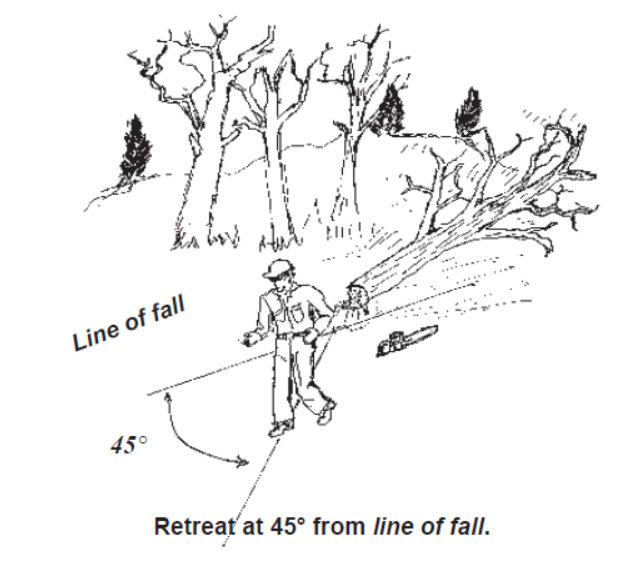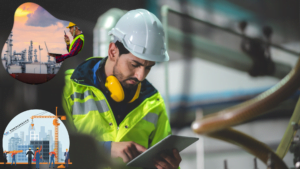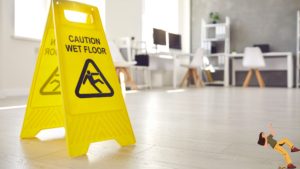Chainsaw Safety
6 min readworking with a chainsaw involves many different work situations with both simple and more complicated steps. The chainsaw is a very effective tool, but it can also be dangerous if used improperly. In order to avoid accidents and unnecessary strain, you should use the correct working techniques, the best possible safety equipment, and a modern chainsaw with functioning safety features.
This Article is written to provide information and procedures that will reduce the possibility of injury from chainsaw accidents in the logging, construction, and agriculture industries. At the conclusion of this article, you will be able to:
- list the common causes of chainsaw accidents;
- explain how chainsaw kickback occurs and how to prevent it;
- list the protective equipment necessary when using a chain- saw;
- describe general chainsaw safety considerations; and
- list regulations regarding the operation of a chainsaw by children younger than 16.
Also Read: Limb & body protection-Chainsaws

Background
Chainsaws were once used only in the logging industry, but are
now common tools for ranchers, farmers, and homeowners. These
modern wonders of cutting are used for clearing land, trimming
trees and cutting firewood. With up to 600 teeth passing a given
point each second, the chainsaw is one of the most efficient cutting devices ever invented. However, a chainsaw in the hands of
an inexperienced or careless operator is a dangerous device. Some
of the accidents associated with chainsaws include:
- chainsaw kickback;
- reaching across or holding work near the moving blade;
- losing control of the saw due to loss of footing;
- cutting at or above waist level;
- climbing while carrying a running chainsaw;

- getting struck by falling limbs or flying particles, and
- receiving burns from contact with hot chainsaw parts or fires.
Also Download: Photo of the day: Incident Investigations
Safety Precautions
Many chainsaw injuries occur because operators come into contact with the blade by failing to follow recommended operating procedures. The best way to avoid chainsaw accidents is to read the owner’s manual carefully. After you have read and understood the owner’s manual, you will need to equip yourself with the proper clothing and other protective equipment to help reduce the possibility of a serious injury:
Clothing. Clothes should be well fitted (not baggy) and be free of dangling strings, loose belt ends, or anything that could become entangled in the chainsaw. Note: OSHA requires the use of cut-resistant material, such as ballistic nylon, for the protection of legs and thighs. Refer to 29 CFR 1910.266(d)(iv) for the logging industry.
Head protection. A properly fitted hard hat provides protection from falling tree limbs, branches, or other material that could cause serious head injuries.
Eye protection. Safety goggles, face shields, or safety glasses with side shields will prevent eye injury from flying wood chips, twigs, and sawdust. ( Also Read: Photo of the day: Protect your Head )
Hearing protection. Earmuffs or earplugs should be worn by the operator to protect from continual exposure to noise from the operating saw.
Foot protection. Protect your ankles and feet with steel-toed boots in case of accidental contact with the moving saw blade. Slip-resistant soles may be necessary to provide additional safety if weather conditions or terrain indicate the need.
Hair. Secure long hair or wear it under a hat so that it doesn’t obstruct your view or become entangled.
First-aid Kits. OSHA requires employers to provide a first-aid kit at each work site where trees are being cut down.
Also Read: What Should Be in Your First Aid Kit?
General Chainsaw Safety
Before and after each operation:

- Check the saw carefully for loose, damaged, or broken parts. Remove from operation until repaired or replaced.
- Check for damage to the bar such as nicks, dents, or bends. Repair or replace the guide if necessary.
- Keep the saw chain sharp and at the proper tension.
- Fill the fuel tank in an open area while the engine is cool. Sparks from an already hot engine can create a fire hazard. Fuel at least 10 feet away from the area of operation. Properly clean any spills.
- Check the chain to make sure it does not move when the engine is idling. Adjust the idle of the saw if necessary.
- Do not cut large trees on windy days. The wind may cause a tree to fall in an unplanned direction.
- Use extreme caution if weather conditions such as rain, snow, etc., create poor footing.
- Clear the area before cutting. Create an escape path 45 degrees to the rear of the tree fall line.
- Remove any broken or dead limbs that could fall before cutting the tree.
- Check for trees with large crotches that can split or cause the tree to fall either way.
- Look for trees with tension that could cause them to spring when cut. Cut spring poles or branches from the underside. Always use extreme caution
Kickback Prevention
Kickback occurs when the upper chain or the chain at the nose of the guide bar grabs into the wood or other obstruction, and with the force of the engine, pushes (or kicks) the saw back toward the operator. This action can cause even an experienced operator to lose control of the saw and come into direct body contact with the moving saw blade. If the upper chain is involved, the saw can be forced straight back toward you. If you attempt to make cuts with the tip of the chainsaw or if the tip of the saw comes in contact with a hidden limb in front of the saw cut, the saw will be forced in an upward arc back toward you.
To prevent Kickback:

- grasping the forward handle with the left hand, palm down;
- wrapping your fingers around the handlebar and keeping it between your index finger and thumb; and
- firmly grasping the rear handle with the right hand.
- Never stand directly in the back of a cut. Stand to one side of the cut. When cutting limbs from a felled tree (limbing), stand on the opposite side of the trunk from the cut.
- Saw only with the bottom part of the chain, with the work against the saw or saw bumper. Never cut with the nose or tip of the chainsaw.
- Avoid cutting limbs above mid-chest height.

Whenever possible keep the tree trunk between you and the saw blade.
Coming of Age
The U.S. Department of Labor (29 CFR 570 Subpart E-1) has determined that certain occupations are particularly hazardous for youths under age 16. The hazardous occupations order forbids persons under the age of 16 to operate, adjust, or clean a chainsaw or any other power-driven saw. The order also forbids those under 16 from working in operations related to felling, bucking, skidding, loading, or unloading timber with a butt diameter of more than six inches.
Also Read: Quick Guide to Control wood dust hazards at work
Review Questions
- Safe operation of a chainsaw would include which of the fol- lowing items?
- a. Checking your equipment before and after each use.
- b.Reading the owner’s manual and knowing your equipment.
- c.Having the required personal protective equipment.
- d.All of the above.
- The majority of all chainsaw injuries occur because operators fail to follow recommended operating procedures.
True False
- What causes kickback on a chainsaw?
- a. Cutting with the bottom of the saw blade.
- b. Cutting with a sharp chainsaw at high speed.
- c. Cutting with the “nose” or tip of the chain bar.
- d. All of the above.
- The safest position to stand in when cutting a felled tree is on the opposite side of the tree from the cut.
True False
- Fuel tanks may be filled anywhere around the area of operation.
True False
Answers
- d
- True
- c
- True
- False (10′ from the area of Operation )
Also, Read: Accident Investigation for Everyone
Please visit our Safety Resources SAFETY BAG to have many Safety Resources




